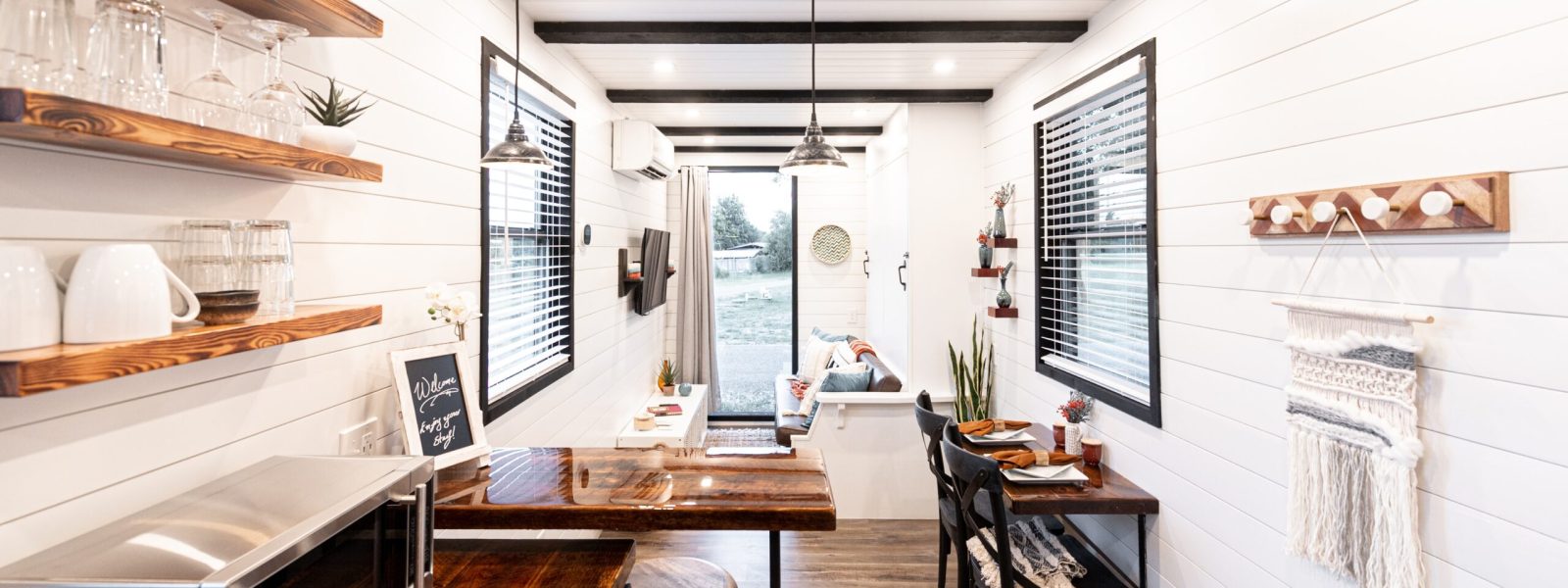Are you curious about the tiny home movement in the GTA's real estate market? Is it gaining traction?
Let's explore the factors driving the demand for tiny homes, the challenges of implementing this movement, and the economic impact it has on the GTA.
We'll also delve into the design trends, environmental benefits, financing options, and future prospects for tiny homes in the Greater Toronto Area.
Get ready for an objective, analytical, and data-driven analysis of this growing phenomenon.
Key Takeaways
- Tiny homes have gained popularity in the GTA due to affordability and their impact on urban planning.
- Zoning and affordability are the main challenges of implementing the tiny home movement in the GTA.
- Tiny home communities in the GTA foster a sense of community and require careful compliance with regulations and infrastructure planning.
- Tiny homes have a positive economic impact on the GTA real estate market by providing affordable housing options and increasing housing inventory.
The Popularity of Tiny Homes in the GTA
Are you curious about the GTA's real estate market and its current popularity of tiny homes?
In recent years, tiny homes have gained significant popularity in the Greater Toronto Area (GTA). This surge in interest can be attributed to a combination of factors, including the growing desire for more affordable housing options and the impact on urban planning.
The popularity of tiny homes stems from their ability to provide a more affordable housing solution compared to traditional homes in the GTA. With skyrocketing housing prices and limited affordability, tiny homes offer a more accessible entry point into the real estate market.
Moreover, the rise of tiny homes has also influenced urban planning strategies, as it challenges conventional notions of housing and encourages a more sustainable and efficient use of land.
As we delve into the factors driving the demand for tiny homes in the GTA, we can better understand the growing appeal of these compact dwellings.
Factors Driving the Demand for Tiny Homes in the GTA
If you're wondering what factors are driving the demand for tiny homes in the GTA, you'll be interested to know that several key factors contribute to the increasing popularity of these compact dwellings.
- Affordability: With the skyrocketing prices of traditional homes in the GTA, many people are turning to tiny homes as a more affordable housing option.
- Sustainability: Tiny homes are known for their eco-friendly design, utilizing less energy and resources, which appeals to environmentally conscious individuals.
- Minimalism: The minimalist lifestyle has gained traction in recent years, and tiny homes perfectly align with this trend, offering a simpler and clutter-free living experience.
- Flexibility: Tiny homes provide the flexibility to live in various locations, making them ideal for those who desire a nomadic lifestyle or want to avoid long commutes.
The impact of tiny homes on the GTA real estate market is significant, as they offer an alternative solution to the housing crisis and cater to changing lifestyles. However, implementing the tiny home movement in the GTA also presents several challenges.
Challenges of Implementing the Tiny Home Movement in the GTA
While occasionally overlooked, there are some significant challenges to implementing the Tiny Home Movement in the GTA. One major challenge is the issue of zoning. The current zoning regulations in the GTA aren't designed to accommodate tiny homes, which are typically smaller than the minimum size requirements for traditional homes. This makes it difficult for individuals to find suitable land to build or park their tiny homes.
Additionally, there are affordability issues. While tiny homes are often touted as a more affordable housing option, the high cost of land in the GTA can make it challenging for individuals to find affordable places to build or park their tiny homes.
These challenges of zoning and affordability need to be addressed in order to fully implement the Tiny Home Movement in the GTA.
Transitioning into the subsequent section about 'tiny home communities in the greater Toronto area', it's important to explore potential solutions to these challenges.
Tiny Home Communities in the Greater Toronto Area
Finding a sense of community is an important aspect of embracing the Tiny Home Movement in the GTA, with individuals coming together to create tiny home communities. These communities provide an opportunity for like-minded individuals to connect, share resources, and support one another in their tiny home journey.
However, the establishment of these communities can be challenging due to tiny home zoning regulations in the Greater Toronto Area. Local authorities have specific regulations regarding the size, location, and infrastructure requirements for tiny homes. Developers and residents of tiny home communities need to navigate these regulations to ensure compliance and obtain necessary permits.
Additionally, community infrastructure for tiny homes, such as water, sewage, and electricity, must be carefully planned and implemented to meet the unique needs of these small dwellings.
The Economic Impact of Tiny Homes on the GTA Real Estate Market
Tiny homes can have a significant impact on the GTA real estate market by providing affordable housing options and increasing the availability of housing inventory. With the rising cost of traditional homes in the Greater Toronto Area (GTA), many individuals and families face affordability challenges when it comes to finding suitable housing.
Tiny homes, often priced lower than conventional houses, offer an alternative solution to this problem. By promoting affordability, tiny homes can help address the housing needs of a broader range of people in the GTA. Additionally, the construction of tiny homes can contribute to economic benefits by providing job opportunities in the housing industry.
As a result, the introduction of tiny homes into the GTA real estate market can play a crucial role in addressing affordability challenges and boosting economic growth.
Moving forward, it's important to consider the legal considerations for tiny home ownership in the GTA.
Legal Considerations for Tiny Home Ownership in the GTA
To understand the legal considerations for owning a tiny home in the GTA, you should be aware of the regulations and zoning laws that govern these types of dwellings. Here are some key points to consider:
- Zoning regulations: The GTA has specific zoning regulations that dictate where tiny homes can be located. It's important to research and understand the zoning requirements in your desired area before embarking on your tiny home journey.
- Building codes: Tiny homes must adhere to certain building codes to ensure safety and structural integrity. Familiarize yourself with the building codes in the GTA to ensure your tiny home meets the necessary standards.
- Permits: Depending on the size and location of your tiny home, you may need to obtain permits from the local authorities. It's crucial to follow the proper permitting process to avoid legal issues.
- Utilities and services: Consider the availability of utilities and services such as water, electricity, and sewage connections. Some areas may have limitations or restrictions on these services for tiny homes.
Tiny Home Design Trends in the GTA
When considering the design of your tiny home in the GTA, you can incorporate both modern and eco-friendly elements to create a functional and sustainable living space. Tiny homes in the GTA have seen a rise in popularity, and with that, there has been an increase in innovative interior design ideas and unique features. Take a look at the table below to see some of the trending design elements in GTA tiny homes:
| Design Element | Description | Example |
|---|---|---|
| Multipurpose Furniture | Furniture that serves multiple functions to maximize space | Sofa that can be transformed into a bed or storage compartment |
| Smart Storage Solutions | Innovative storage solutions to optimize space | Hidden compartments under stairs or in walls |
| Energy-Efficient Appliances | Appliances that minimize energy consumption | Solar-powered fridge or energy-efficient heating system |
These design trends not only make the most of limited space but also contribute to a more sustainable lifestyle. Now let's explore the environmental benefits of tiny homes in the GTA.
The Environmental Benefits of Tiny Homes in the GTA
By choosing a tiny home in the GTA, you can significantly reduce your carbon footprint and contribute to a more sustainable environment. Tiny homes are known for their energy efficiency, making them an environmentally friendly housing option. Here are four key environmental benefits of tiny homes in the GTA:
- Reduced energy consumption: Tiny homes require less energy for heating, cooling, and lighting due to their smaller size. This leads to lower energy bills and a decreased demand for energy resources.
- Minimal environmental impact: The construction of tiny homes often involves the use of eco-friendly materials and sustainable building practices. This helps reduce waste and the overall carbon emissions associated with the construction process.
- Efficient use of resources: Tiny homes promote sustainable living by encouraging minimalism and reducing the consumption of resources such as water and electricity.
- Lower transportation emissions: Tiny homes are often built on wheels or can be easily transported, allowing homeowners to choose eco-friendly locations or move closer to their workplaces, thus reducing transportation emissions.
By embracing the environmental benefits of tiny homes, you can make a positive impact on the environment while enjoying a more sustainable lifestyle.
Now, let's explore the financing options available for tiny home buyers in the GTA.
Financing Options for Tiny Home Buyers in the GTA
If you're considering purchasing a tiny home in the GTA, there are various financing options available to help you make your dream of homeownership a reality.
The rising popularity of tiny homes has led to the emergence of alternative financing options specifically tailored for this market. One such option is personal loans, which can be used to cover the cost of purchasing or building a tiny home. These loans typically have lower interest rates and more flexible repayment terms compared to traditional mortgages.
Additionally, some tiny home builders offer in-house financing options, allowing buyers to make payments directly to the builder over time.
In terms of government support, it's worth exploring grants, subsidies, or tax incentives that may be available for individuals interested in purchasing or building a tiny home. These options can help reduce the financial burden and make homeownership more accessible for those interested in the tiny home movement in the GTA.
Future Prospects for the Tiny Home Movement in the GTA
As a prospective homebuyer in the GTA, you may be wondering about the future prospects of the tiny home movement in the area. The future trends of the tiny home movement in the GTA are promising, as more and more people are embracing the concept of living in smaller, more sustainable spaces. Here are some factors that contribute to the potential growth of the tiny home movement in the GTA:
- Increasing demand for affordable housing solutions: The high cost of traditional homes in the GTA is driving the demand for more affordable options, and tiny homes provide a viable solution.
- Growing interest in sustainable living: The focus on environmental sustainability is expected to continue, and tiny homes offer a more eco-friendly lifestyle with reduced energy consumption.
- Flexibility and customization: Tiny homes provide homeowners with the opportunity to design and customize their living spaces according to their specific needs and preferences.
- Supportive policies and regulations: The GTA is witnessing a shift in zoning regulations to accommodate tiny homes, which further encourages their growth in the region.
With these sustainability factors and future trends, the tiny home movement in the GTA is poised for continued growth and popularity.
Frequently Asked Questions
What Are the Average Costs Associated With Purchasing a Tiny Home in the Gta?
The average costs of purchasing a tiny home in the GTA vary depending on factors like size, location, and amenities. Financing options such as loans or personal savings can be used to cover these expenses.
Are There Any Specific Zoning Regulations That Need to Be Considered When Building or Parking a Tiny Home in the Gta?
When building or parking a tiny home in the GTA, it's crucial to consider specific zoning and parking regulations. These rules ensure that your tiny home is compliant with local laws and regulations.
How Does the Size and Limited Space of a Tiny Home Impact the Overall Living Experience?
Living in a tiny home comes with implications of limited space. However, designing for efficiency can mitigate these challenges. With strategic layouts and multifunctional furniture, the overall living experience can be optimized.
Are There Any Specific Challenges or Obstacles That Potential Tiny Home Owners Face When Trying to Find Suitable Land or Parking for Their Homes in the Gta?
Finding suitable land or parking for tiny homes in the GTA can pose challenges. Limited space in these homes affects the overall living experience. Addressing these obstacles is crucial for the success of the tiny home movement in the region.
What Are the Potential Advantages and Disadvantages of Living in a Tiny Home Community in the GTA Compared to Traditional Neighborhoods?
Living in a tiny home community in the GTA can have advantages such as cost-effectiveness and a sense of community. However, it may also have disadvantages like limited space and potential conflicts in community dynamics and social interactions compared to traditional neighborhoods.
Conclusion
In conclusion, while the tiny home movement has gained some traction in the GTA's real estate market, it's still facing challenges in terms of implementation and acceptance.
Factors such as affordability, sustainability, and minimalistic living appeal to a niche market, but mainstream adoption remains limited.
However, with the increasing popularity of alternative housing options and growing environmental consciousness, the future prospects for the tiny home movement in the GTA are promising, albeit with a long road ahead.





